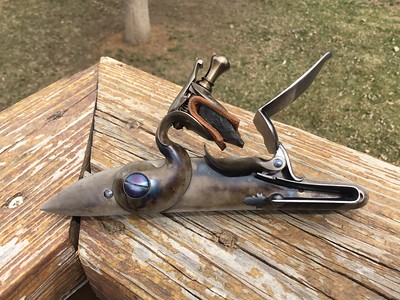Getting a reasonable poor-to-fair finish on the trigger guard casting for my Woodsrunner was not a good experience. It makes me approach the finishing of the lock plate, cock, and frizzen with mucho fear and trepidation. Can someone give me a Cliffs Notes quickie on what they did to smooth out the as-cast finish on their Kibler lock? I have seen several Kiblers that were just left in the as-cast condition. Although I probably can't leave it alone, I am tempted to, based on my incompetence on the trigger guard (of course the trigger guard casting was really crummy compared to the lock casting). Any help and mentoring will be GREATLY appreciated, I assure you.
edited to add: particularly worried about the tail of the lock plate where it tapers to a point. The factory inletting is superb and I dont want to mess it up.
edited to add: particularly worried about the tail of the lock plate where it tapers to a point. The factory inletting is superb and I dont want to mess it up.






![IMG_0881[1].JPG](https://cdn2.imagearchive.com/muzzleloadingforum/data/attachments/227/227583-c4bea0ebf3b100c9903367b5a7915566.jpg)



